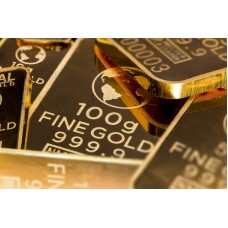Gold price increased 18.4% in 2019
According to the World Gold Council, 2019 Highlights, North American and European funds drove almost all inflows each growing 14% in 2019, SPDR Gold Shares and iShares Gold Trust collectively represented nearly half the global inflows & Global gold-backed assets under management (AUM) grew 37% in US dollars during the year as a result of positive demand, combined with an 18.4% increase in the gold price.
Global gold-backed ETFs and similar products had US$19.2bn, or 400 tonnes(t), of net inflows in 2019 in almost all countries, after holdings rebounded in December.2 Collective ETF holdings reached all-time highs of ~2,900t in the fourth quarter.
Regional overview:
North American funds led regional inflows in 2019, adding 206t (US$10.1bn, 14.4% AUM) as growing geopolitical tensions and the first Federal Reserve rate cuts in a decade fuelled market uncertainty. European funds experienced inflows of 188t (US$8.8bn, 13.6%) driven primarily by UK-based funds, which added 91t (US$4.1bn, 14.5%) on the heels of ongoing Brexit concerns.
Asian funds finished the year relatively flat, losing 0.1t (US$12mn, 0.3%). Funds in other regions grew 16.3%, adding 6.3t and US$311mn, with most of the growth coming from Australian-listed funds.
Price performance:
Gold reached or was near all-time highs in every major G10 currency apart from the US dollar and Swiss franc. And gold’s US dollar price performance during 2019 (+18.4%, $1,515/oz) tracked three distinct timelines:
1: relatively flat, near $1,300/oz, throughout May as the dollar strengthened and geopolitical concerns had yet to come to the forefront
2: strong rally between early June and early September, reaching a multi-year high of US$1,546/oz, as the Fed shifted to cutting rates for the first time since the financial crisis and US/China trade tensions and Brexit concerns increased
3: some drop of its gains ($1,450/oz) in the early part of the fourth quarter as geopolitical resolutions (Brexit, US/China) were extended into 2020, while risky assets continued to “melt higher.” However, gold finished the year 4% higher in December, near the y-t-d highs, as investors positioned ahead of 2020.
Demand:
Ultimately, gold-backed ETF inflows alongside central bank purchases were a large driver of global gold demand in 2019. Increased investor activity in the gold market was also evident through trading volumes and positioning in derivatives markets. Global trading volumes rose 27% y-o-y to US$145bn per day in 2019, up from US$114bn per day in 2018.
Gold futures market positioning closed the year on a positive note as COMEX net longs4 remained near all-time highs, well above long-term averages. And bullish sentiment was reflected in the gold options market with large call options purchases, where investors paid an all-time premium for upside calls compared to downside puts.
2019 drivers continue into 2020:
Though most global equity indices finished the year at or near all-time highs, gold shone, realising its strongest price increase in ten years. The strength of gold was mainly the by-product of a dovish shift in monetary policy. Our research indicates that a shift from a hawkish or neutral stance to a dovish one has historically led gold to outperform.
The impact of monetary policy on gold. Additionally, investors may have been drawn to our research that shows the positive impact of lower rates on gold prices as well as the potential for additional gold exposure (potentially replacing bonds) in a low-rate environment. And with over 90% of sovereign debt trading with negative real rates, the opportunity cost of investing in gold improved.
Looking ahead, many of gold’s 2019 geopolitical, market and economic drivers could continue into 2020, as discussed in our recent blog Key trends to watch as we conclude 2019. While expectations for future US Federal Reserve interest rate cuts have fallen, continued Fed intervention in the repo market has led some to consider this a form of quantitative easing through liquidity injection.
While a “lite version” of a US/China trade deal was agreed in principle, it has yet to be formally signed, and terms have yet to be disclosed. Continued discussion of more contentious policies, like intellectual property and currency manipulation, are likely to come to the forefront. And while PM Boris Johnson has secured a commanding majority in the UK parliament, the impact of the 2020 Brexit has yet to be realised.
Finally, multiple expansion in the global stock markets, as well as surprisingly low yields in speculative corporate debt, continue to worry investors. A willingness to add risk, as stock market sentiment remains at extremely bullish levels, is evidenced by VIX futures levels near all-time short levels. At times, historically, significant VIX short positioning has preceded sharp stock market sell-offs and subsequent rallies in the price of gold.




